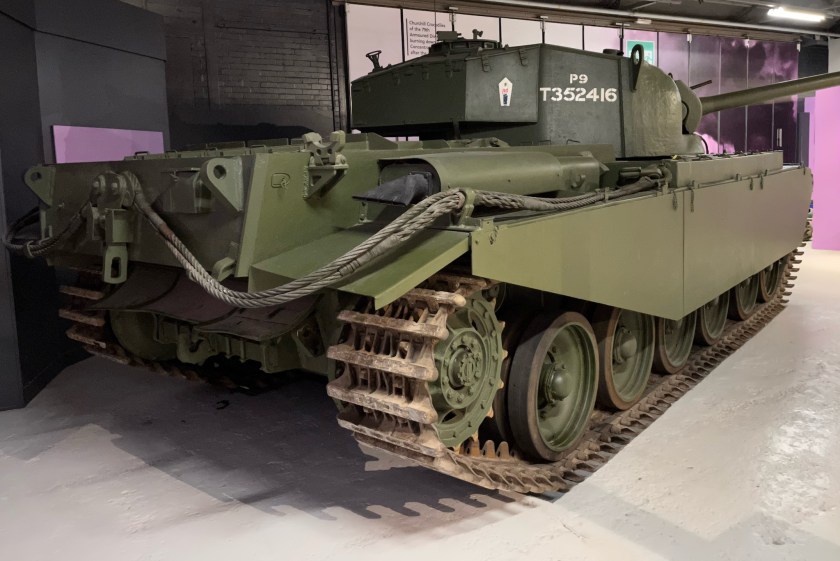One tank that did interest me at Bovington was the Centurion Mk I.

The Centurion was the primary British main battle tank of the post-Second World War period. Introduced in 1945, it is widely considered to be one of the most successful post-war tank designs, remaining in production into the 1960s, and seeing combat in the front lines into the 1980s.
Development of the Centurion began in 1943 with manufacture beginning in January 1945. Six prototypes arrived in Belgium less than a month after the war in Europe ended in May 1945, so too late to see action.
Of course in any alternative history scenario where the war continued after May 1945 in Europe, the Centurion Mk I would have seen action. Likewise in a another alternative history scenario where either Stalin decided to press West after defeating Nazi Germany to take over Western Europe, or the Western Allies decided to “liberate” Eastern Europe from the yoke of Stalin’s communist oppression, again the Centurion Mk I would have seen action.
I remember when Battlefront put up the details about their 15mm Australian Mk5 Centurion for Vietnam. I wrote the following thought:
My first thought when I saw the Centurion Mk5 was how close was it to the early versions, could I get away with using it for my Late War British forces in say a 1946 scenario? Only a handful of Mk1s were made when in November 1945 the Mk2 started coming off the production lines. The Mk3 did not enter production until 1948, so for a 1946 scenario, it would be the Mk2. The main difference between the Mk5 and the Mk2 would the main weapon, with the Mk5 having the L7 105mm gun, whilst the 1945 version had the QF 20 pdr. Though it would appear from the Battlefront site that the Australian Army Centurions were armed with the QF 20 pdr.
Simon in a comment in response, said:
Nice thought, but too many differences. For a start, different turret shape: no bustle, smaller, different-shaped stowage bins. No long-range fuel tank on the back, completely different engine deck. The ANZAC Mk V had a 105mm gun, the 20pdr had no fume-extractor and no muzzle-brake. These are just off the top of my head! However, if it’s a what-if scenario, who cares?
You can now get a 15mm Centurion MkI from Butlers’ Printed Models.

Ah the wonders of 3D printing.
The Centurion actually first first entered combat with the British Army in the Korean War in 1950, in support of the UN forces.




































